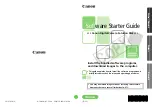
H
907
Programming Operations Guide
hard disk
A data storage device that uses rigid magnetic disks permanently installed inside the
computer CPU or a portable unit.
HDLC
High-level Data Link Control (HDLC) is a group of protocols or rules for transmitting
data between network points or nodes. Data is organized into a unit, called a frame, and
sent across a network to a destination that verifies its successful arrival. The HDLC
protocol also manages the flow or pacing at which data is sent. HDLC is one of the most
commonly-used protocols in Layer 2 of the industry communication reference model,
Open Systems Interconnection (OSI).
held line reminder
A telephone rings and displays the message
On hold: LINENAM
when you place an
external call on hold for programmed period of time. Set the Held Line Reminder under
Feature settings. (Services, Telephony Services, General Settings).
High-level Data Link Control
See HDLC.
HLC
The Home Location Code (HLC), also known as a Location code (LOC) is used as part of
a UDP dialing plan to identify each node on a private network.
Hold button
Use this button to interrupt calls so that you can perform another task without
disconnecting the caller.
Home Location Code
See HLC and location code.
hookswitch Flash
See Link.
hospitality services
These features allow a hostelry to use room and desk telephones to communicate
housekeeping and alarm information between each room and the front desk (admin
telephone), including setting call restrictions at different levels for each room. The
telephones also have all configured system call capabilities.
host name
In networking, this is the name of a computer that provides services, such as database
access, to other computers or Business Communications Manager base units in the
domain. Computers with a host name also have a unique IP address. Because the Business
Communications Manager base unit has a unique IP address, the Business
Communications Manager base unit qualifies as a host.
Summary of Contents for BCM 3.7
Page 4: ...4 Software licensing N0008589 3 3...
Page 32: ...32 Contents N0008589 3 3 W 937 Index 939...
Page 46: ...46 Tables N0008589 3 3...
Page 64: ...64 How to get help N0008589 3 3...
Page 90: ...90 Manually activating Telnet N0008589 3 3...
Page 116: ...116 Delayed system restart N0008589 3 3...
Page 194: ...194 Configuring a data module N0008589 3 3...
Page 276: ...276 Setting line telco features N0008589 3 3...
Page 310: ...310 Using COS passwords N0008589 3 3...
Page 364: ...364 Enhanced 911 E911 configuration N0008589 3 3...
Page 380: ...380 Renumbering DNs N0008589 3 3...
Page 398: ...398 Saving wizard pages on your computer N0008589 3 3...
Page 458: ...458 Voice Mail settings N0008589 3 3...
Page 488: ...488 Setting system telco features N0008589 3 3...
Page 508: ...508 Other programming that affects public networking N0008589 3 3...
Page 522: ...522 PRI networking using Call by Call services N0008589 3 3...
Page 592: ...592 Monitoring Hunt groups N0008589 3 3...
Page 636: ...636 Configuring Double Density N0008589 3 3...
Page 640: ...640 Using the Network Update Wizard N0008589 3 3...
Page 666: ...666 Importing and Exporting DHCP data N0008589 3 3...
Page 722: ...722 Restarting the router N0008589 3 3...
Page 726: ...726 Important Web Cache considerations N0008589 3 3...
Page 748: ...748 Configuring an Interface with NAT N0008589 3 3...
Page 794: ...794 IPSec N0008589 3 3...
Page 818: ...818 Configuring the Policy Agent characteristics N0008589 3 3...
Page 832: ...832 Firewall rules for Business Communications Manager with Dialup interfaces N0008589 3 3...
Page 876: ...876 ISDN Programming N0008589 3 3...
Page 1004: ...1004 Index N0008589 3 3...
















































